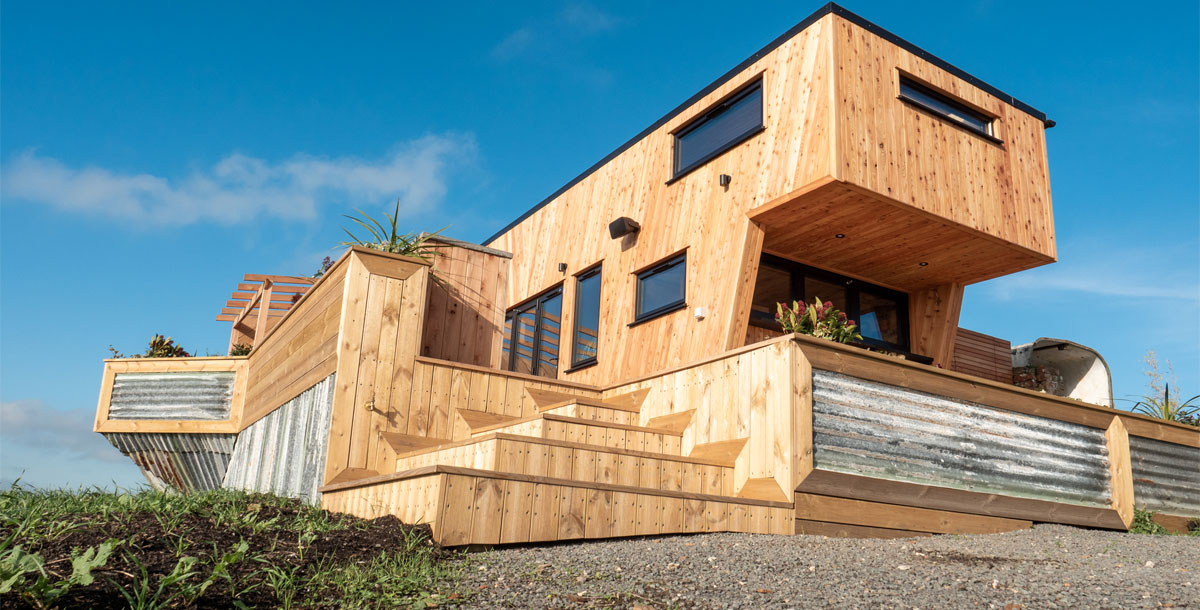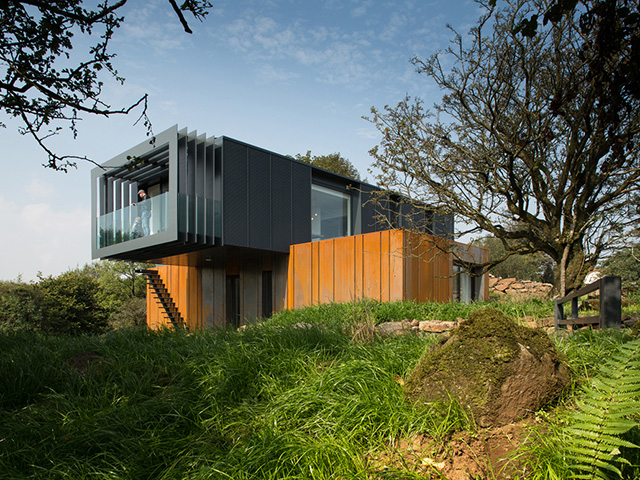Why tiny homes are on the up
Cheaper to build and run with greater off-grid potential, miniature housing is getting big
Unconventional living is becoming an increasingly popular choice. The latest trend is tiny homes. More and more people are opting to live off-grid in compact eco homes, converted shipping containers, cabins in the woods and vans transformed into mobile homes for globe-trotting adventures.
Tiny homes cost less to build and to run, and they require fewer materials to build, meaning a smaller carbon footprint. They have really taken off in America, where there are some 10,000 dinky dwellings. Even Elon Musk bought a 375sq ft prefab to use at his Texas spaceport.
There are thought to be just 200 official tiny homes in the UK. The movement has so far remained chiefly underground, mostly due to tricky planning laws.
‘The trend of small living is pretty close to a social movement at this point,’ says Ross Clarke, founder of Dorset-based Minor Homes. ‘It is yet to really take off in the UK because planning permission has no category for a “tiny house”, and it currently falls under the same legal definition as a caravan.
‘We feel our homes are much more than a caravan, we build them as homes for people who are struggling to afford bricks and mortar. The average house price in the UK is now £296,000 – we can build an extremely well appointed house with all fixtures, fittings and furniture for around a third of that.’
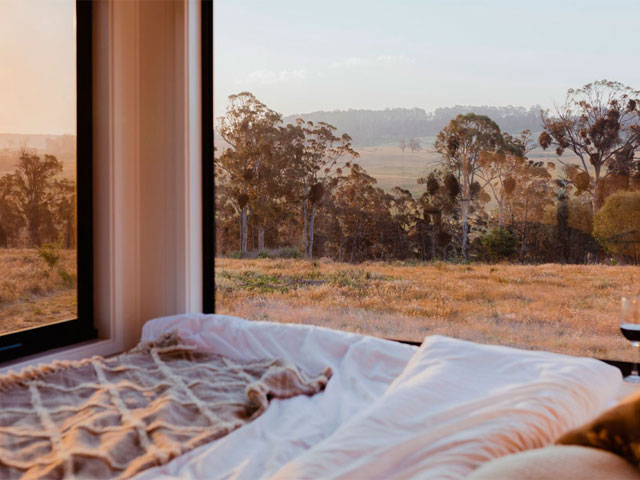
A tiny home in the wilderness. Photo: St John Imagery
How big are tiny homes?
Tiny homes come in all shapes and sizes, from eco cabins to shipping container stacks. There’s just one rule uniting them – tiny homes must be 400sq ft or less in floor area – that’s smaller than the minimum space requirements for a London flat. If you’re up to the task, you can build or refurbish your own for as little as £6,500.
With tiny homes saving on average £780-£1,057 per month (based on data from 2020) it’s no wonder the demand for miniature housing is rising. From healthier finances to a minimalist, low-carbon lifestyle, there are many benefits to downsizing, but you don’t have to go without your creature comforts. Tiny homes can be equipped with off-grid gas and solar power so you can still enjoy a hot shower and cosy evenings, however remote you go.
If off-grid living sounds good to you, take a look at some of the most inspiring ways to embrace the tiny homes movement.
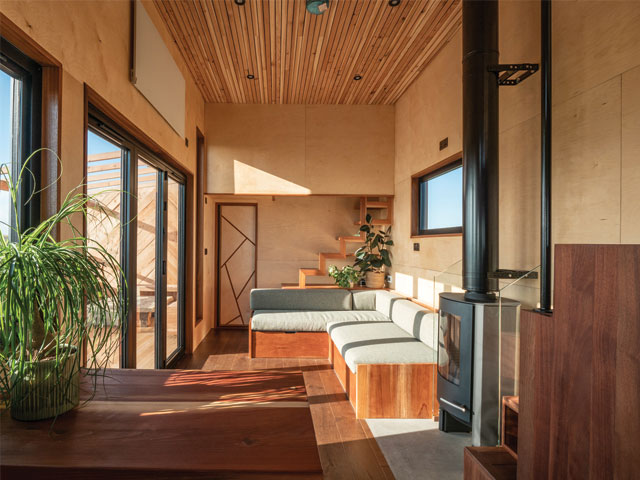
Photo: Minor Homes
Eco cabins
Volumetric construction has made it faster and cheaper to build good quality homes, and a number of start ups have seized the opportunity to create small, affordable, well-insulated eco cabins. As well as the aforementioned Minor Homes, Cheshire-based The Tiny Housing Co uses Modern Methods of Construction (MMC) to provide sustainable buildings designed to last more than 60 years. Bristol-based Agile manufactures affordable, low-carbon, modular homes starting from 388sq ft, and Hertfordshire-based Tiny House Pro creates small, functional spaces starting from just over 172sq ft.
The one-bedroom home pictured below measures just 172sq ft and was created using a modular self-build system called U-Build, developed by architectural practice Studio Bark. Located in Dorset, it belongs to Connie and Jasper, who are in their mid-twenties. It has a mezzanine bedroom, small kitchen, shower room and a composting loo. Heat comes from a woodburning stove and power from a 32amp shorepower connector, which plugs in like a caravan. They also plan to install solar photovoltaic (PV) panels on the roof. A similar house costs £1,400-£1,800 per sqm.
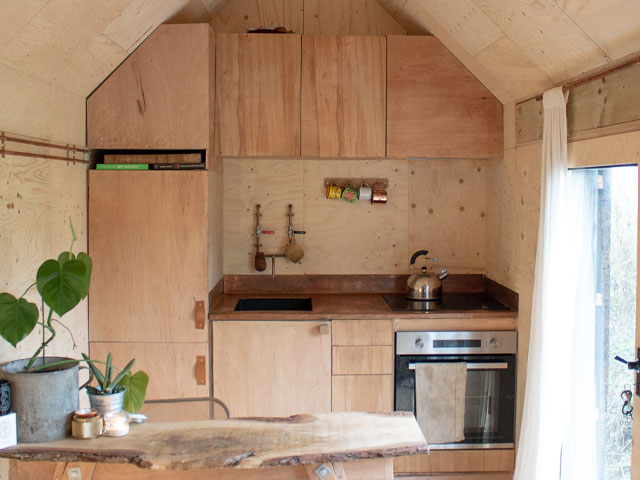
Photo: Connie and Jasper
Shipping containers
Shipping containers are also a popular choice for tiny homes. Market Watch has predicted that shipping container homes will have a global growth rate of 6.5% from 2019 to 2025. A permanent dwelling can cost as little as £40,450. The ‘tin can’ aesthetic is ideal for a modern minimalist, and shipping containers can be fully insulated and equipped with off-grid gas, so you needn’t worry about being cold.
One of Kevin McCloud’s favourite self-build projects from Grand Designs was Patrick Bradley’s shipping container home in County Derry. Built on his parents’ farm, the three bedroom, two bathroom house – costing around £130,000 – doesn’t qualify as a tiny home, but it does demonstrate the versatility of shipping containers.
Houseboats
While the average narrowboat offers around 350sq ft of living space, houseboats don’t officially qualify as tiny homes because they are on water and therefore not considered real estate (like caravans, there is no Stamp Duty Land Tax to pay). Houseboats are perfect for the free-spirited, offering adventure, the chance to meet new communities of boaters, and easy afternoons of fishing, reading and exploring the countryside.
The reduced costs are obviously a bonus, too. Boat licences cost between £500-£1,000 per year. And mooring fees, depending on location, can cost as little as £15-£20 per foot per year. In cities, however, residential moorings can be expensive and hard to come by. To avoid paying mooring costs, live life on the move and avoid staying in one place for more than 14 days.
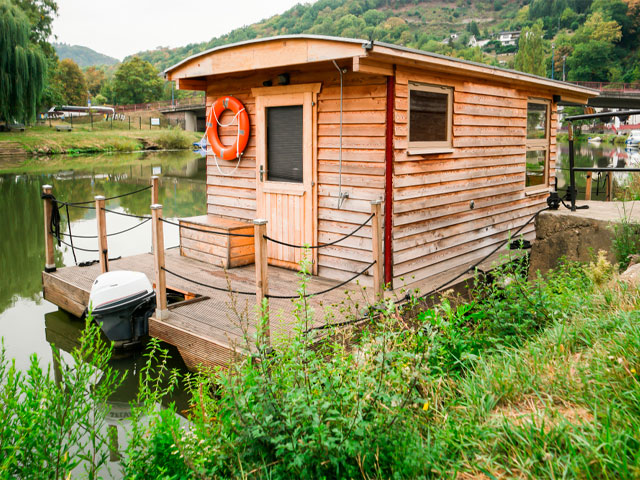
Wooden houseboat on the river Lahn, Germany. Photo: Birgit Reitz-Hofmann
Bus or van conversion
If life on the water isn’t your thing, consider the endless possibilities of a home on wheels. You can convert a bus or a van to include everything you need: a bedroom, bathroom, shower, bath, kitchen and living space.
This lifestyle isn’t as farfetched as you’d think. In 2017, a couple from London bought a second-hand double-decker bus for £2,500 and converted it into a luxurious tiny home for £15,000. This included the installation of gas and electric. Like many who embrace the tiny home movement, it sits on a small plot of land owned by family.
If family land isn’t an option for you, consider buying a patch of land to park your unique home. Even after buying the land, a vehicle and the cost of conversion, setting up home on a bus is still a lot cheaper than the average house.
View this post on Instagram
Lead image: Minor Homes

